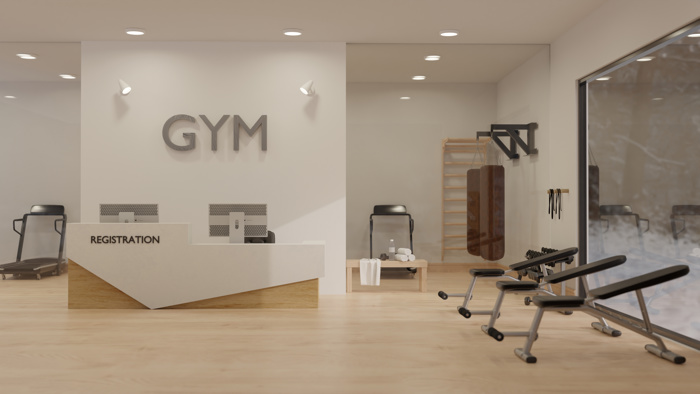Blog | Valuation | Leisure
Fit for Purpose: How UK Gyms Are Adapting to Changing Consumer Demands

Market Overview
The gym sector is considered one of the strongest leisure markets with a growing emphasis on a healthy lifestyle change in society. As a result, Gym membership levels in 2024 have surpassed pre-covid levels recorded in 2019, with a notable increase in demand from older demographics, particularly individuals over 75 who are eager to remain active. Industry data reveals that gym-goers are spending more time in the gym, shifting from one or two visits per week to three or more. This trend has led to an increase in higher-end gyms offering further amenities such as meeting rooms and dedicated workspaces to enhance their value proposition.
There is still very strong demand from the younger generation and budget gyms where PureGym announced 37 new gym openings in 2023 and that memberships increased by 16% in the same year. There is a particular demand for budget gyms who target high quality basic gym facilities at a low and flexible membership cost.

There are challenges in the market and Gym operators are also prone to the rise in living costs. However, research indicates that the gym market remains resilient and consumers are prioritising their gym membership in comparison to other monthly outgoings. For instance, we understand David Lloyd has seen sustained demand despite raising membership fees to offset a significant £22 million increase in energy costs, that was driven by geopolitical factors such as Russia’s invasion of Ukraine. Similarly, a newly opened gym in the East Midlands reached maximum capacity within four months and became profitable despite projections expecting this to take 2 years. The market is seeing an influx of gym facilities, with demand consistently keeping pace.
In addition to traditional gyms, the market has expanded to include new entrants focused on specialised offerings such as recovery-based facilities. Other submarkets within the sector now include fitness class studios, premium health clubs, private member clubs, and day/destination spas. Traditional budget gyms, mid-market gyms, and digital-only fitness services catering to home workouts are also well represented. However, some operators are facing challenges in securing suitable properties for new locations. This issue is particularly acute for premium gyms, which now prioritise spaces with ample natural light and adaptable floor plates.

Government Incentives
From relevant research, the UK invests approximately 0.15% of GDP on recreational and sporting services which is one of the lowest in Europe. In comparison, Sweden, Finland and France spend approximately 0.5% and Iceland spend c.1.7%. This demonstrates limited investment in the UK market despite research stating 80% of voters want the government to prioritise public health initiatives, and the government itself recognises physical activity as a crucial component in addressing health disparities and promoting well-being. Gyms are increasingly seen not only as fitness hubs but also as social spaces that foster mental health and community well-being.
Higher end gym operators are still struggling to secure suitable land and buildings due to delays in the planning system. Many operators are collaborating closely with government bodies to expedite site approvals and align with broader development goals. However, there is still a limited number of new proposed sites as a result of premium gym brands demanding specific characteristics in their gyms to include good natural light and external areas which is sometimes difficult especially in cities.

Gym Operator Property Requirements
To meet the growing demand, gym operators typically seek the following criteria in their property decision making:
- Prominent locations with spaces ranging from 10,000 to 30,000 square feet, allowing for gym floors between 16,000 and 25,000 square feet
- Higher end gyms want outdoor space to meet the demands of new trends including Padel
- Some operators may consider smaller spaces, provided they have sufficient ceiling height to accommodate mezzanine levels
- Locations within a 15-minute drive of populations exceeding 80,000 people
- Highly visible and accessible locations, such as roadside warehouses or retail parks. We have seen a theme of former supermarkets being converted into Gyms.
- In urban areas, gyms prefer densely populated locations near offices and transport links, including proximity to tube stations
- In suburban areas, some occupiers require a minimum of c. 140 parking spaces or validated parking options within shopping centres
- High-end gyms prioritise wellness-focused facilities
- Budget gym chains are particularly focused on expanding in London and major university towns

Rental Market
There have been numerous rental transactions within the market where gym occupiers are willing to pay a premium for the right property in the right location. Within London, we have seen the ‘The Gym Group’ taking 10,000 sqft in Surbiton for c. £25.00 psf on best space in Summer 2024 with the unit being within the main retail pitch and in close proximity to Surbiton station. Further, we have also seen a smaller Gym operator paying c. £21.50 psf on best space for a 15,000 sqft gym on Bromley High Street. Both transactions show evidence of good rents in busy locations.
Outside of London, rents vary typically between £5.00 psf to £20.00 psf. We have recently seen a letting at c.£5.50 psf for a c.15,000 sqft secondary retail unit within Fareham to a much stronger rental being achieved in Hull when Pure Gym took 10,000 sqft within the Clough Road Park for c. £11.00 psf. Retail parks are proving popular for occupiers owing to their good car parking provisions.

Investment Market
As mentioned above with more people being members of a gyms, this has naturally increased demand from a property investment perspective. Gyms which are occupied by national chains often offer good covenant strength which investors deem appealing. Popular gym investments typically provide long income with fixed rent reviews which is often linked to RPI. We highlight some recent transactions of gyms across in the past 12 months:
Gym Transaction Highlights:
- Nuffield Health, West Byfleet, GU22 – March 2024
Freehold. c. 22 years unexpired with five yearly RPI linked Rent Reviews.
Sold for £4.3 million – c.7.25%
- David Lloyd, Peterborough, PE3 – April 2024
Freehold. c. 17 years unexpired with five yearly reviews fixed at 3% pa compounded
Sold for c. £5.8 million – c. 6.50%
- The Gym, Northampton, NN5 – March 2024
Freehold. c. 9 years unexpired
Sold for £2.5 million – c. 7.50%
- Pure Gym, Witney, OX28 4JF - December 2023
Freehold. c.11 years to break. Lease subject to five yearly RPI reviews
Sold for £1.95 million – c. 6.25%
Related Insights

Leasehold, Commonhold & Rental Reforms - key changes & their potential impact
The property landscape in England and Wales is undergoing significant changes, with the introduction of new legislation aimed...

Podcast: With £1billion of sales at auction three Allsop experts say how they would invest £10m in 2025
Want to know more or would simply like some advice? We hope you find this podcast useful. If you want to know more about topi...

Hotel Market Update
Market Overview The gym sector is considered one of the strongest leisure markets with a growing emphasis on a healthy lifest...

Podcast: Demystifying the commercial property lending process
If you’re looking to raise finance against commercial property, where do you start? In this episode we help you to understand...